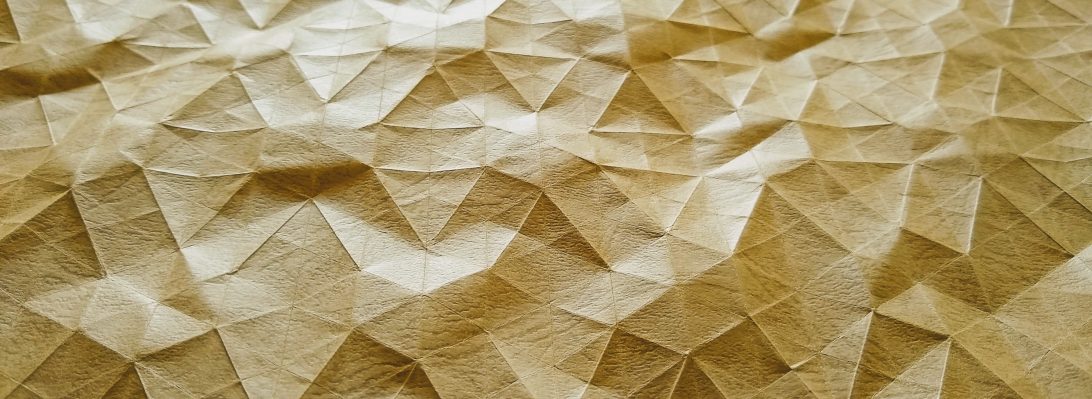Polly Verity is a paper artist I have watched since she came on Instagram (@polyscene)

She has a singular style and a seemingly superhuman touch when it comes to teasing character from paper – her paper silhouettes are like nothing else.

Polly is drawn to the geometry of plain paper, expertly capturing the light and shade that corrugated paper naturally causes.
Today she posted a corrugation that LOOKS curved, but as I bathed in it’s posted beauty, I recognized it had to be a much simpler underlying box-pleated crease pattern, and I knew that I HAD to try it.

Peeling off a 2:1 rectangle from my 90cm Kraft roll (90x45cm resultant sheet), I lay in a longitudinal axis gutter (valley), then added a deeeeep zigzag. This afforded the laying in of standard box-pleat fill-in creases that I then alternated mountain/valley to make the sheet one giant accordion pleat that folds up and on itself (resulting is a stored size that is tiny – 23x2cm).
The joy of this corrugation is that when it opens up, curves emerge from the straight lines – like by magic.
Continue reading


















